
Knight Lore is a 1984 action-adventure game developed and published by Ultimate Play the Game, and written by company founders Chris and Tim Stamper. The game is known for its use of isometric graphics, which it further popularized in video games. In Knight Lore, the player character Sabreman has forty days to collect objects throughout a castle and brew a cure to his werewolf curse. Each castle room is depicted in monochrome on its own screen and consists of blocks to climb, obstacles to avoid, and puzzles to solve.

Nekketsu Kōha Kunio-kun, released as Renegade in the West, is a beat 'em up video game developed by Technōs Japan and distributed by Taito for the arcades in 1986. In the original Japanese version Nekketsu Kōha Kunio-kun, the game revolves around a high-school delinquent named Kunio-kun who must stand up against a series of rival gangs frequently targeting his classmate Hiroshi. In the Western version Renegade, the player controls a street brawler who must face four different gangs in order to rescue his girlfriend being held captive by a mob boss.

Ghostbusters is a licensed game by Activision based on the film of the same name. It was designed by David Crane and released for several home computer platforms in 1984, and later for video game console systems, including the Atari 2600, Master System and Nintendo Entertainment System. The primary target was the Commodore 64 and the programmer for the initial version of the game was Adam Bellin. All versions of the game were released in the USA except for the Amstrad CPC and ZX Spectrum versions, which were released only in Europe, and the MSX version, which was released only in Europe, South America, and Japan.

Gunfright is an action-adventure game developed by Ultimate Play the Game and published by U.S. Gold. It was first released for the ZX Spectrum in December 1985, then released for Amstrad CPC and the MSX the following year. The player takes the role of a sheriff in the town of Black Rock and is tasked with eliminating outlaws who are scattered throughout the settlement.

Tornado Low Level is a multidirectional flight game developed by Costa Panayi and published in 1984 by the company he co-founded, Vortex Software. The game was released for the ZX Spectrum in 1984, with ports for the Amstrad CPC and Commodore 64 in 1985.

Tau Ceti is a video game published in 1985 by CRL for the ZX Spectrum and converted to the Amstrad CPC, Amstrad PCW, Atari ST, Commodore 64, and MS-DOS. It was designed and programmed by Pete Cooke. The world, set on Tau Ceti III orbiting Tau Ceti, is displayed using 3D graphics with shadow effects. The planet has a day and night cycle.

Spindizzy is an isometric video game released for several 8-bit home computer formats in 1986 by Electric Dreams Software. It combines action and puzzle game elements. Players must navigate a series of screens to explore a landscape suspended in a three-dimensional space. Development was headed by Paul Shirley, who drew inspiration from Ultimate Play the Game games that feature an isometric projection.

Monster Max is a 1994 action-adventure puzzle video game developed by Rare and published by Titus France in Europe for the Game Boy. The player is the titular aspiring rock star, who, in an attempt to fight King Krond who bans all music, traverses nine floors of the Mega Hero Academy. Floors consist of diversely-designed rooms of puzzles to solve, the player having to figure out the order of actions to take.
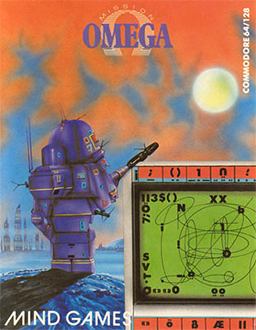
Mission Omega is a computer game published in 1986 by Argus Press Software for the ZX Spectrum, Commodore 64 and Amstrad CPC home computers. It was programmed by Stephen Ward.

Escape from the Planet of the Robot Monsters is a multidirectional shooter released in arcades by Atari Games in 1989. The game is styled after campy science fiction B movies of the 1950s. It was ported to the Amiga, Amstrad CPC, Atari ST, Commodore 64, MS-DOS, SAM Coupé, and ZX Spectrum.
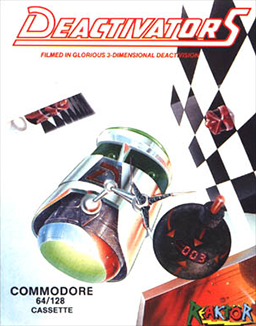
Deactivators is a 1986 puzzle video game designed by David Bishop and Chris Palmer, developed by Tigress Marketing and System Software, and published by Ariolasoft's action game imprint Reaktor. The player controls bomb disposal robots known as deactivators and must use them to deactivate bombs planted by terrorists in five research complexes. The concept for the game came from a brainstorming session between Bishop and Palmer; its design and development took five to six months to complete. It was released for the Amstrad CPC 464, Commodore 64, and ZX Spectrum platforms in October 1986.

Dandy is a dungeon crawl maze game for the Atari 8-bit family published by the Atari Program Exchange in 1983. It is one of the first video games with four-player, simultaneous cooperative play. Players equipped with bows and unlimited arrows fight through a maze containing monsters, monster spawners, keys, locked doors, food, and bombs in search of the exit leading to the next level. If a player dies, they can be revived by finding and shooting a heart. The game includes an editor for making new dungeons.
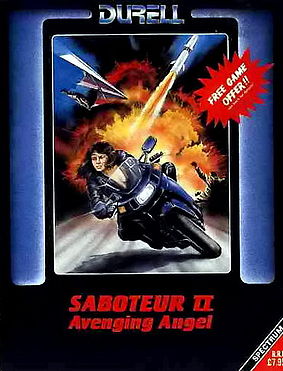
Saboteur II: Avenging Angel, also known as Saboteur 2, is an action-adventure game created by Clive Townsend and released by Durell Software in 1987 for the ZX Spectrum, Amstrad CPC, Commodore 64, and MS-DOS compatible operating systems. A sequel to 1985's Saboteur, the player controls a sister of Ninja from the first game on a mission to avenge his death. Saboteur II was one of the first action-adventure games with a female protagonist and was well received by critics.

Movie is a video game written by Duško Dimitrijević for the ZX Spectrum and Amstrad CPC and was published by Imagine Software in 1986.

Batman is a 1986 isometric action-adventure game by Ocean Software for the Amstrad PCW, Amstrad CPC, ZX Spectrum, and MSX, and the first Batman game developed. The game received favourable reviews. An unrelated Batman game was released two years later, titled Batman: The Caped Crusader.

Alien Highway: Encounter 2 is an isometric action game released by Vortex in 1986 for the ZX Spectrum and Amstrad CPC. It was programmed by Mark Haigh-Hutchinson and is the sequel to Highway Encounter.
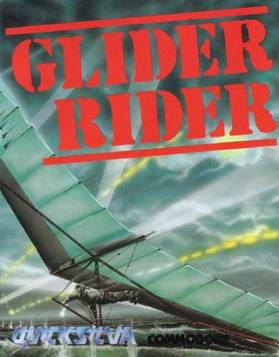
Glider Rider is an isometric action-adventure game published by Quicksilva in 1986 for the ZX Spectrum, Commodore 64, and Amstrad CPC. The music was composed by David Whittaker.

Rolling Thunder is a run and gun video game developed by Namco in Japan and Europe and released in 1986 as a coin-operated arcade video game using the Namco System 86 hardware. It was distributed in North America by Atari Games. The player takes control of a secret agent who must rescue his female partner from a terrorist organization. Rolling Thunder was a commercial success in arcades, and it was released for various home computer platforms in 1987 and the Nintendo Entertainment System in 1989. The original arcade game has been included in various classic game compilations as well. It influenced later arcade action franchises such as Shinobi and Time Crisis, which borrowed mechanics such as taking cover behind crates.

The Flintstones is a 1988 video game based on the 1960s television series The Flintstones. The game was developed by Teque Software Development and published by Grandslam Entertainments. The game was released in Europe in 1988, for Amiga, Amstrad CPC, Atari ST, Commodore 64, MSX, and ZX Spectrum. A version for the Sega Master System was released in 1991.
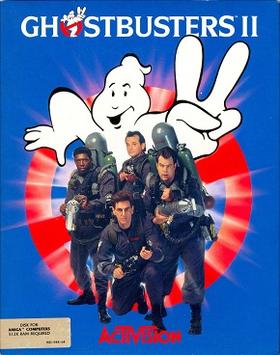
Ghostbusters II is a 1989 action game based on the film of the same name. It was published by Activision for various computer platforms. British studio Foursfield developed a version for Commodore 64, Amiga, Atari ST, Amstrad CPC and ZX Spectrum, which also got ported to the MSX by New Frontier. It features three levels based on scenes from the film. Dynamix developed a separate version for the DOS, also based on the film. The non-DOS versions were praised for the graphics and audio, but criticized for long loading times, disk swapping, and the final level. The DOS, Commodore 64 and Amiga versions were the only versions released in North America.




















